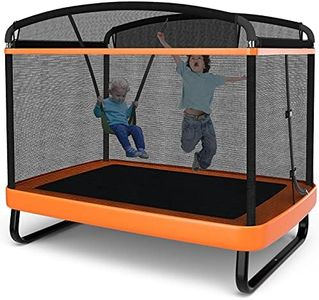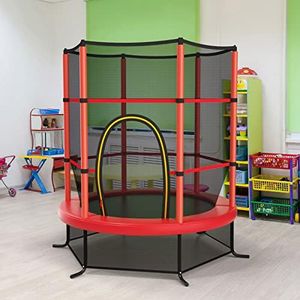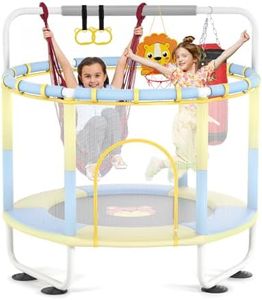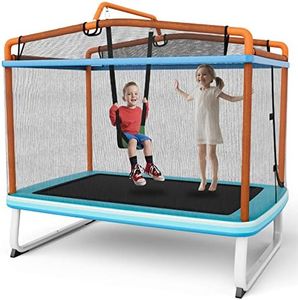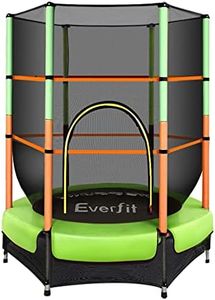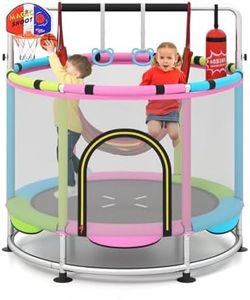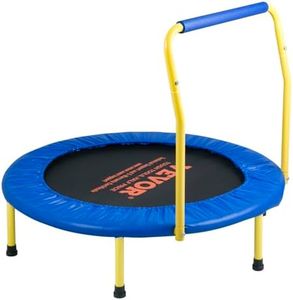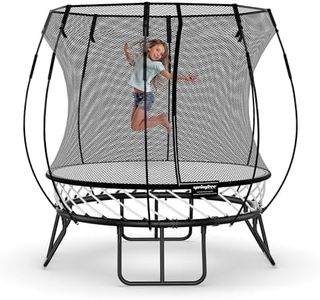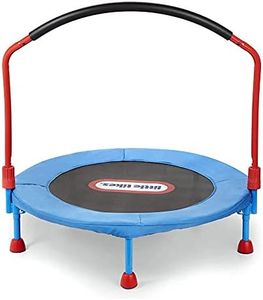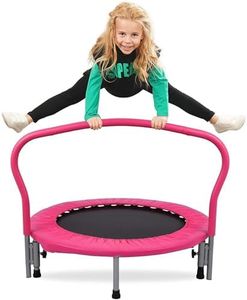We Use CookiesWe use cookies to enhance the security, performance,
functionality and for analytical and promotional activities. By continuing to browse this site you
are agreeing to our privacy policy
10 Best Toddler Trampolines
From leading brands and best sellers available on the web.Buying Guide for the Best Toddler Trampolines
Choosing a toddler trampoline is a fun and important decision because it impacts your child’s enjoyment, development, and safety. The right trampoline will encourage active play, help improve balance and coordination, and provide hours of entertainment. Focus on options designed specifically for toddlers as these are made to keep little ones safe while they jump and play. Think carefully about the space you have at home, how many children will use it, and any special safety features you want. Understanding the key features of toddler trampolines will make sure you find the best fit for your child’s needs.Size and ShapeSize refers to the diameter of the jumping area and the overall footprint of the trampoline. This spec is crucial because it needs to fit safely in your available space and suit your child’s age and activity level. Toddler trampolines usually range from about 3 to 5 feet in diameter. Smaller trampolines are ideal for limited spaces and for younger toddlers who are just starting out, offering more control and a gentler bounce. Larger trampolines give more room for jumping and can accommodate more than one child at a time, but they need a bigger, safer area to avoid collisions with furniture or walls. Choose a size based on your available space and whether you expect siblings or friends to join your child.
Safety FeaturesSafety features include padded frames, low heights, safety handles, and enclosure nets. They are essential for preventing injuries and helping your toddler build confidence while playing. Look for trampolines with handles or bars if your child is still learning to balance, or enclosed models that prevent accidental tumbles. Padding around the frame and springs reduces bumps and bruises. If jumps will happen indoors, low-to-the-ground models minimize fall heights. Consider your child’s age, confidence on their feet, and whether supervision will always be possible when choosing what safety options you prioritize.
Weight LimitThe weight limit tells you how much weight the trampoline can safely support. This is important for both safety and durability, as exceeding the limit can cause accidents or damage to the trampoline. Weight limits typically range from 40 to 100 pounds for toddler trampolines. If you have older toddlers or more than one child who might use the trampoline together, look for a higher weight capacity. Always follow the manufacturer's recommendation to avoid risks.
Bounce Type and SurfaceBounce type describes how springy or soft the trampoline feels, which is determined by the surface material and suspension (such as springs, elastic bands, or a solid mat). A softer, less bouncy trampoline is ideal for younger toddlers or beginners, as it reduces the chance of losing balance or falling. Older or more active children might appreciate a slightly firmer bounce, which adds fun but still needs to be safe for their age. Always check the surface material to ensure it’s non-slip and comfortable for bare feet.
Portability and StoragePortability refers to how easy it is to move or put away the trampoline. Some toddler trampolines are lightweight or foldable, making them easier to move between rooms or take outside. This is convenient if your space is limited or if you want to store the trampoline when not in use. Think about whether you need to move it frequently, and look for folding or lightweight options if flexibility is important for your home setup.

